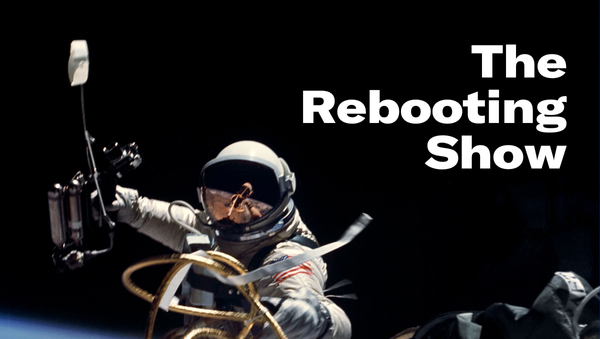Post-pandemic media trends
What's next in digital publishing as the world emerges
Living in Miami has, in many ways, been like living in the post-pandemic future. Life more or less returned to a semblance of normal here months ago. The rest of the U.S. is now getting there, with a dozen states already meeting 70% vaccination rates, airports nearly as busy as ever, and the big talking point on the economy is about overheating, not another Great Depression. There is even a concert for 60,000 planned in Central Park in August.
This is a good time to assess post-pandemic shifts in the media business in the back half of the year. (The third quarter is only three weeks away.)
The return of live events. Next week, I’m going to my first in-person event since February 2020, heading to Paris for VivaTech, where I’m moderating a couple sessions. I’ll be interested to see how the in-person element plays out. My guess is in-person events will boom in the fall. Humans are social creatures. For most, the end of the pandemic will be a smooth transition to normal life, although we will inevitably be subjected to many New York Times stories about the vaccinated oddballs double-masked and barricaded in their studio apartments. The new model for many will be a hybrid, but the in-person piece remains critical for networking, where the majority of value lies in events. People go to TED to meet other people who go to TED, not watch the same talks they can see online.
The age of shortages. The shortages of lumber and semiconductors mostly doesn’t affect media businesses. But they will deal with other shortages, in particular on the labor front. A day can’t go by without another newsroom moving to unionize. The latest is The Atlantic. Coming out of the pandemic, media businesses will need to deal with a tight labor market and the need to raise wages. The combination of unions and a plummeting unemployment rate will test employers who put unrealistic demands on the workforces and/or cut too deeply during the acute phase of the downturn. The shift in power from capital to workers is set to be a defining feature of the economy in the near term.
The consolidation arrives. The bulking up in the streaming sector will inevitably be mirrored, to an extent, in digital publishing. The second half of the year will likely bring new deals to create far larger digital publishing companies. Some combinations will be driven by SPACs, still others will be strong companies that got stronger during the pandemic pressing their advantages. Inevitably, we’ll see more consolidation and fewer big players.
The ad network revival. Ad networks are literally as old as the commercial internet. As soon as sites started to sell ads they realized there was a scale issue since buyers couldn’t buy from every website individually, not to mention when there weren’t standards on ad sizes or specifications. Enter the ad networks, the first aggregators of ad inventory. Publishers loved to hate ad networks, accusing them of taking too big of a cut and often misrepresenting their inventory sources. In what would become a theme of digital advertising, plausible deniability was a feature, not a bug. Programmatic advertising was supposed to change that by improving on the broad categorization afforded by ad networks in favor of “personalization” through the collection of audience data for ad targeting. That’s all been thrown into doubt with the demise of the third-party cookie and privacy restrictions from governments and tech platforms. That should lead to a pendulum shift in favor of context, more likely solved through networks, as well as networks like Vox Media’s Concert that rely on first-party data. And inevitably, we’ll see more networks focused on niche newsletters and local.
Baby steps for crypto media. Many people see the lunatics ranting about the price of Bitcoin and dismiss crypto as another bubble that will burst and dissipate. But the underlying dynamics of blockchains have tremendous potential, and beyond the weirdos, serious people are doing serious projects. But right now, there is little to show for how crypto can change the media business. That will start to change in the back half of the year. Just yesterday, TCG announced it was bringing on former Washington Post exec and prolific crypto/Phish enthusiast Jarrod Dicker to focus on opportunities in blockchain and the creator economy. IAC’s Joey Levin indicated it would look to crypto opportunities, seeing the space as very analogous to the early internet.
Feedback on the future of publisher content studios
Last week, I wrote about how publisher content studios never fulfilled the pipe dream of competing with ad agencies. A media executive shared their thoughts:
"It’s not a death [of content studios], because they never really existed, but it’s a recognition that they’re just marketing teams with a logo and brand. The evolution for publishers has to evolve beyond 15 second bumpers in an instagram or YouTube post. It’s got to be more content oriented and help solve the most important question you can ask your edit team, “What would you do with an unlimited budget?” If they have a good idea, then you can help get clients to pay for that content that readers want. That's the real studio game."
Sponsor message from Tesla Nation

All businesses are tech businesses these days, especially in the media business. In order to compete many media businesses require integrations between various products and even custom development work. The problem: creating an in-house team is slow and expensive, while outsourcing requires finding vetted partners that fit your needs and budget in a sea of thousands of tech agencies.
Tesla Nation is a community from Serbia inspired by Serbian-American inventor Nikola Tesla that gathers the best and brightest of Serbia’s tech ecosystem. Serbia’s rising tech prowess has been covered in the Financial Times and The Economist. Tesla Nation provides a free matchmaking service to vetted, competitive and versatile tech partners.
Other things to check out
I’m continuing my exploration of crypto media and keeping a close eye on the project Kyle Chayka is running on Mirror. He sold 131 NFTs (non-fungible tokens)-- basically, GIFs of the Dirt mascot -- to fund a “season” of the Tk newsletter Dirt. This is an interesting twist on media monetization. The early result: 12.23 ETH of proceeds for two months of Dirt. That works out to the equivalent of $30,000. There’s a definite novelty factor at play, but I suspect we’ll see more monetization models like this that emerge that blur the lines of crowdfunding and subscriptions.
Edwin Dorsey, author of the Wall Street Bears newsletter, has a good thread detailing how he got to $300,000 in gross revenue in a year. He makes a good point about how important it is to find a niche -- and ignore the pressure to constantly do more. Sometimes less is more. The rush to publish daily is the biggest mistake I see with newsletters.
News publishers aren’t the only group pivoting to subscription models. Lifestyle publishers are also looking to tap into niches to rely more on direct consumer revenue. Outside is claiming to have an impressive 500,000 paid digital subscriptions across its portfolio of 30-odd niche brands in healthy living, endurance sports, outdoor sports along with B2B publications for those sectors. CEO Robin Thurston sees a path to over 5 million paid subscribers.
Email has mostly been a safe haven as tech platforms have thrown innumerable roadblocks in front of publishers. The biggest annoyance is getting shoved into the “promotions” tab on Gmail. The good times don’t last. Apple said it will soon prevent senders from knowing if Apple Mail users opened their mail or using their IP address to understand location or “link to your online activity.” Anecdotally, I know family members are surprised I know if they open The Rebooting, which tells me Apple might be onto something, even if publishers don’t like this at all.





